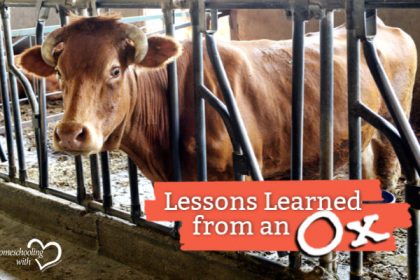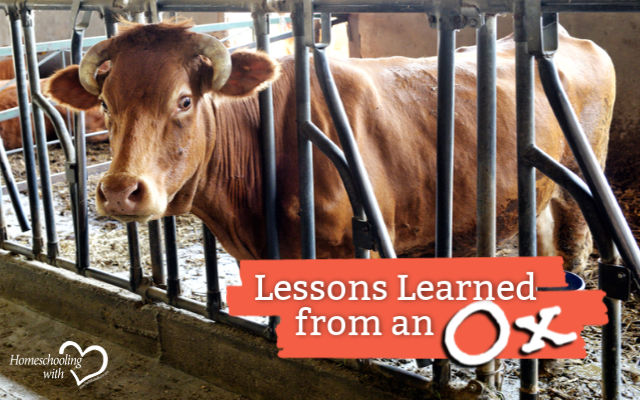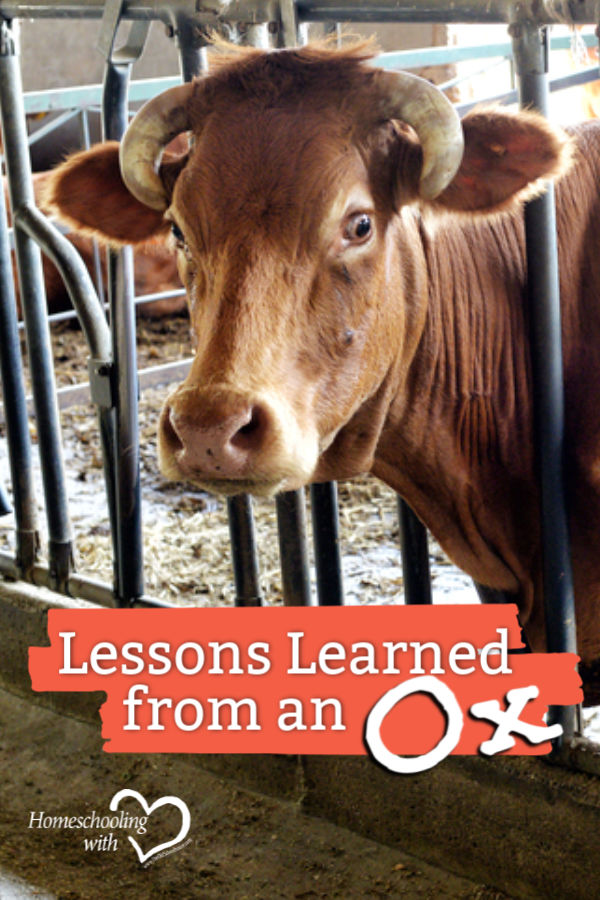Lessons Learned from an Ox


Once, in a Bible study group, we were asked to share a recent passage that had impacted us. Since I had been reading through Proverbs, I knew immediately which verse I was going to use. I also knew it was going to raise a few eyebrows.
“Where no oxen are, the crib is clean: but much increase is by the strength of the ox.”
Prov. 14:4 (KJV)
I was right: my city-dwelling companions thought it was a strange choice.
Based on my Iowa farm girl roots, I knew what kind of work was involved in keeping that “crib,” or “stable,” clean. I was quite young when I lived on the farm, but my memories are vivid. Complete disclosure, we never had any oxen; Dad and Grandpa farmed with mules. We had a small herd of cattle, which provided ample bounty for our table: fresh milk and cream, which Mom and Grandma turned into delightful treats like butter, ice cream, and puddings.
Fortunately, I was too young to be assigned any mucking chores, but I had watched others perform that task. It’s sweaty, tiring, and smelly work. But necessary to keep the cattle and farm workers healthy and the dairy products pure. The last item was particularly important back when Grandpa had a dairy, and sold milk locally.
So, to paraphrase, “A barn without cattle can be kept spotless, but you won’t make any money in the dairy business.”
The thing that struck home about this verse was that the writer of the Proverbs, most likely Solomon, used an illustration based on something most of his readers would be familiar with: domestic animals in their role as the farmer’s helper. In his supreme wisdom, he knew an important principle of teaching: connecting the new topic with something students already know.
Solomon was not alone in using the familiar to make a point. Paul in the New Testament often illustrated his sermons with comparisons to athletic training or to military images, which the Jewish people in a Roman world knew all too well. To explain the functioning of the church, he compared it to the human body.
Jesus himself used parables extensively, many of them referring to everyday objects, people, animals, and activities.
We can follow these examples in teaching our children biblical truths. Taking advantage of opportunities to present their learning in understandable ways will make the process more enjoyable for both teacher and student. The same goes for teaching science, math, or language. Connections to familiar things in their lives not only simplifies the learning process, but makes it more effective.
Choosing the appropriate illustrations can make all the difference in making sure the teaching hits the mark. Just as my city-raised friends missed the full impact of the passage, it struck home for me because of my farm background. As parents, you know exactly what will ring true for your own children.
Jeanette is a semi-retired college English and Spanish instructor and a published author and indie authorpreneur. She has helped over a dozen beginning writers take their project from idea to finished book. Now she is developing online courses and expanding her website and blog to take new authors from aspiring to avid. Declaring herself as “Chaplin by birth; chaplain at heart,” she also writes inspirational articles and blog posts, especially about the lives of Bible women.
Her blogs can be found at http://www.wordsareforever.com/ and https://chaplainesquethoughts.wordpress.com/













































